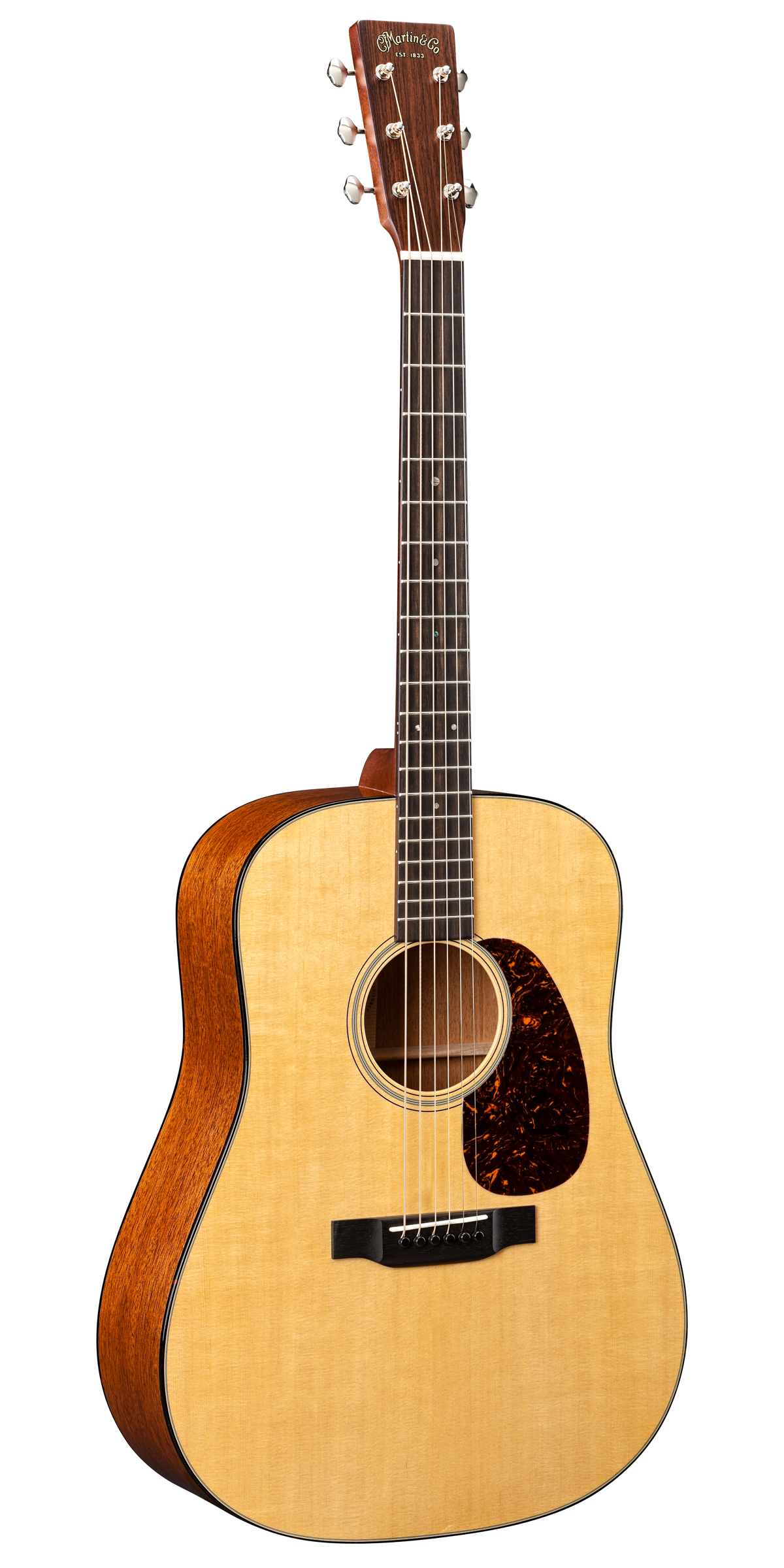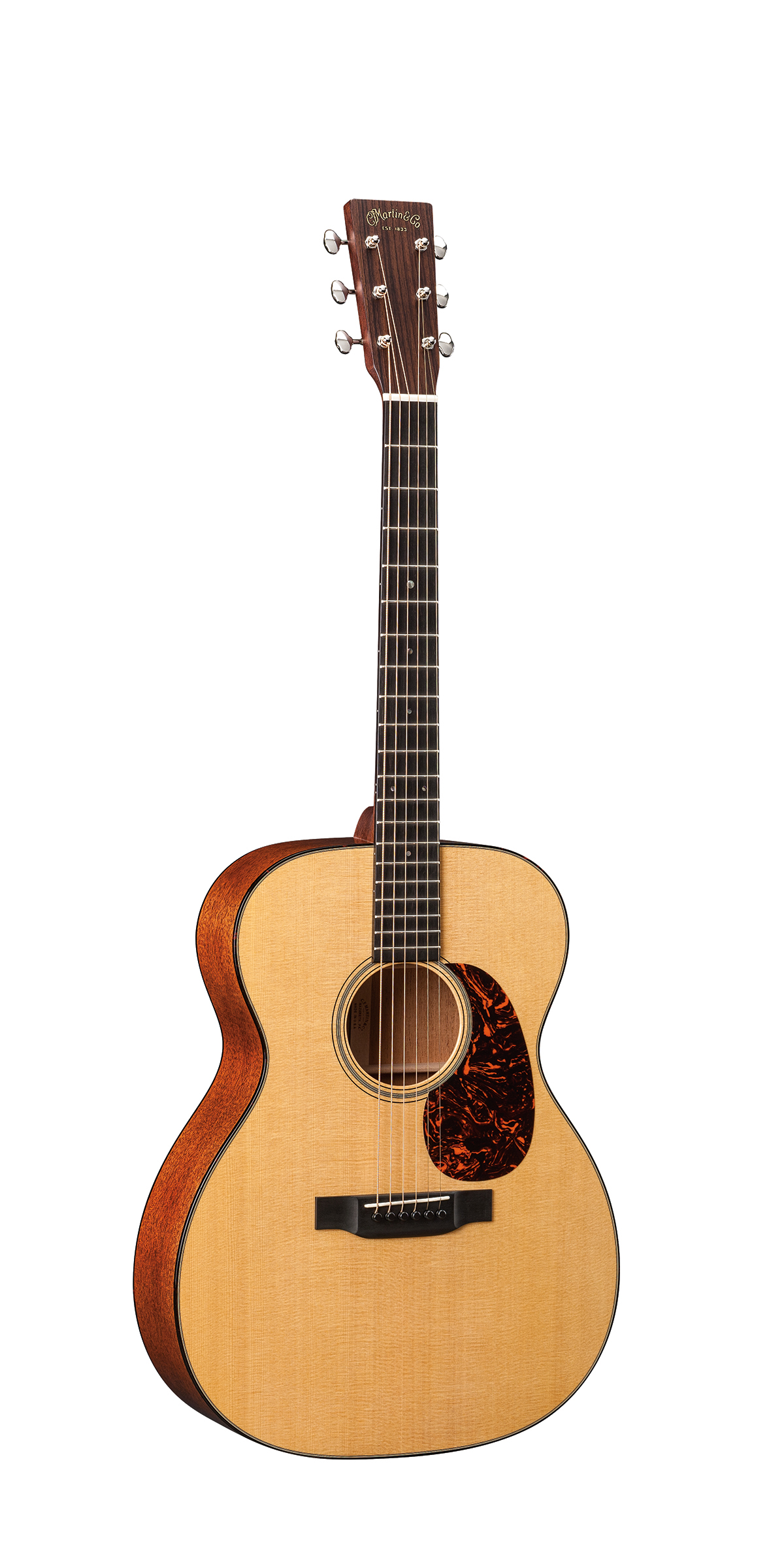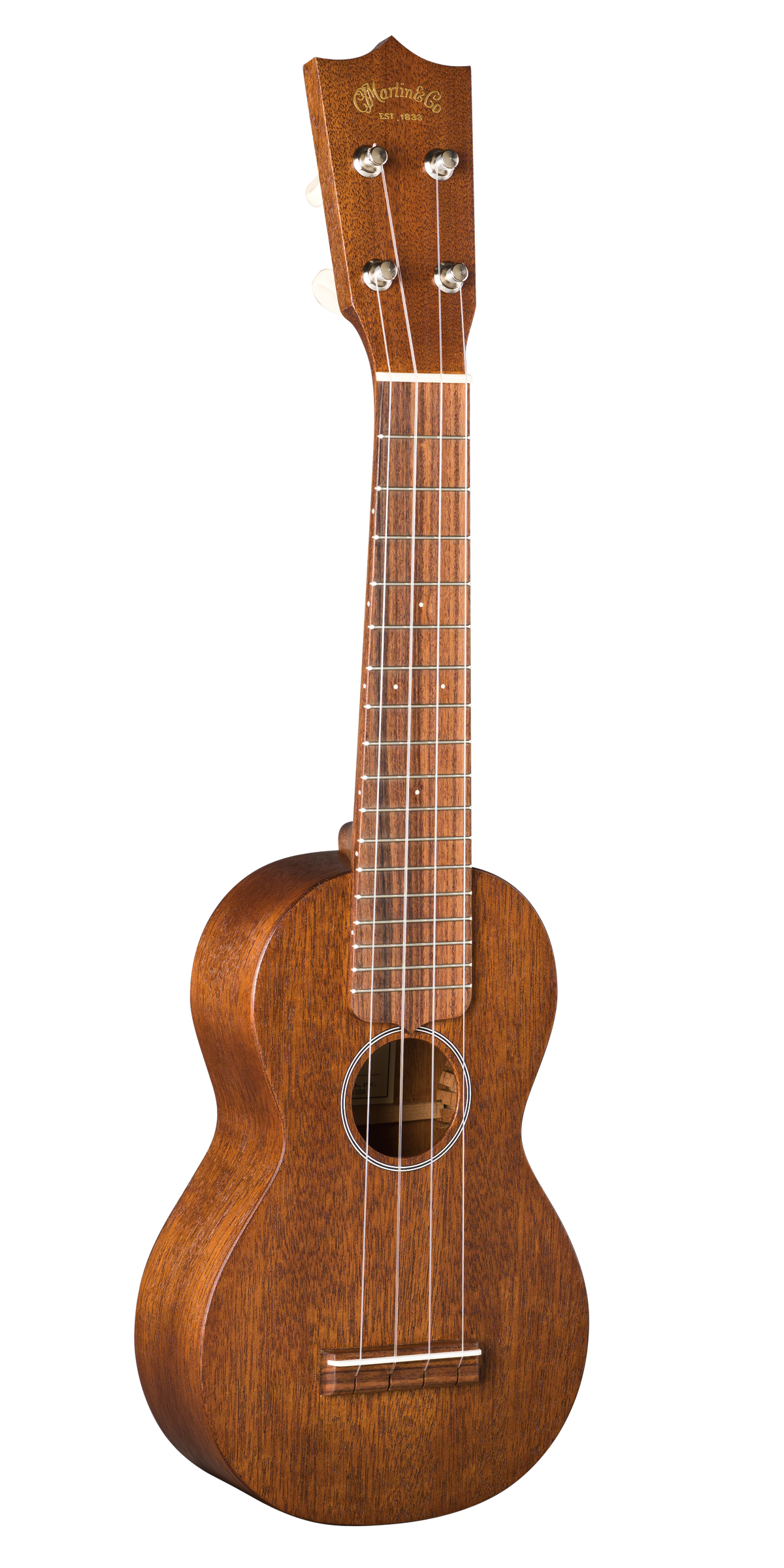
dreadnought
The mother of all acoustic guitars! Developed in the early 20th century to satisfy the need for louder guitars in order to keep up with the wind instruments in the popular bands at the time. The same goal led to the development of the Gibson SJ, the resonator guitar by the Dopjera Brothers (DoBro) and eventually the electric guitar.
The Dreadnought was, at the time, huge and the mightiest guitar, ever seen. A true battle ship. Therefore it was named after the British battle ship HMS Dreadnaught, which was the mightiest vessel to ever sail the seven seas at the time.

om
Another classic from the Martin catalogue. Basically a 000 with a longer neck. It was the first flattop acoustic guitar with the neck transition at the 14th fret instead of the 12th. For this change the guitar also needed some other minor design changes such as repositioning of the soundhole.

omc
Another classic from the Martin catalogue. Basically a 000 with a longer neck. It was the first flattop acoustic guitar with the neck transition at the 14th fret instead of the 12th. For this change the guitar also needed some other minor design changes such as repositioning of the soundhole.

ooo
The, again, larger size with its stronger curves is Martins response to the markets demand for louder, stronger instruments. Corresponding to the venues it can reach it’s also known as the concert hall shape. It is one of Martin’s most popular shapes.

oo
The next step on the way to more volume, bass and a fuller sound. Particularly below the waist the 00 is bigger for more bass but still quite compact. It is especially popular with fingerpickers and bluesmen. This shape is also known as “Auditorium”.

grand performer
Basically a Jumbo. It has a strong bass response but not quite as strong as a Dreadnought.

sc
"Every once in a while C. F. Martin & Co. change the acoustic guitar market forever. The new S-Shape is the result of a complete reconstruction of the guitar itself from scratch! The body doesn't just have a newly designed shape on the outside but also features a completely new style of bracings. This makes the guitar resistant to feedback while still producing a good unplugged sound. The Sure Align TM Neck system with its unprecedented deep cutaway will give you easy access, even to the highest frets, like you have only experienced on electric guitars before. And it even allows a qualified Martin Service Center to easily adjust the neck angle and intonation. This guitar is like nothing you've ever played before!"

m
Even a company like C. F. Martin & Co. can't succeed with everything they do. In the 1930s Martin tried to get a foot in the Archtop market with their F-Models. Unfortunately these Archtops were so unpopular that by the 1960s, vintage guitar shops started converting them by replacing the original tops with X-braced flat tops, thus creating an all new Martin shape. By 1977 Martin recognised the potential of this Martin guitar that never really was one and turned it into a proper, official Martin model, called the M-Shape, also known as the Grand Auditorium. The M-36 has a beautiful three part rosewood back and sides like a the D-35 plus a sitka spruce top. The fret board is bound in antique white.

j
Martin's Jumbo shape is one of its more recent designs, originally introduced in 1985 (which, thinking in Martin terms, is close to yesterday). The J-40 has the same body style of an M model but the depht of a Dreadnought making its tone powerful and strong. The classic combination of sitka spruce and East Indian rosewood make make this instrument well balanced and projecting. To match the amazing sound of this guitar visually and highlight its beautiful wood, the J-40 antique white bindings with multy stripe on fingerboard and headstock and reduced hexagon fret markers and abalone inlayed block logo.

grand j
"There aren't many 12-string models in the Martin catalogue, so when the R&D team creates a new one they make it matter. The goal in developing this guitar was nothing less than making the best sounding 12-string guitar at the most affordable possible price.
The relatively rare Grand Jumbo shape is the largest in Martin's catalogue and delivers a huge tone. Combined with the brilliant, glistening trebles of the octave strings this makes this instrument the ultimate tone machine that can easily keep up with the best on the market.
Being a 16 series instrument this guitar features a gloss sitka spruce top, satin east indian rosewood back and sides, a select hardwood neck and an ebony fretboard and bridge. A built in Fishman Matrix VT Enhance NT2 system completes this stage ready working musicians guitar."

o
This is the oldest Martin shape, derived directly from the then common classical guitar shape. For today’s standards the shape is somewhat special for vintage enthusiasts. It is, however, used in a modified form as the “little Martin” shape. Other brands call this the “Parlour” shape.

modified 0
These sturdy little guitars are ideal for people who travel a lot. The design is absolutely plain, no bindings, fret markers on the side of the fretboard only, satin finish. The birch laminate neck with its Richlite fingerboard is extra stable and insensitive to humidity changes. Back and sides are made of high pressure laminate (HPL), a very strong and dense material, consisting of multiple layers of paper and resin with amazing sonic properties. For those of you who are looking for the ultimate in stability there are two models with HPL tops, for those who want a more traditional, open sound there are the models with solid sitka spruce tops, but you shouldn’t just leave these in your trunk.

junior
The Juniors are classic Martin shapes but slightly smaller to accommodate players whose arms just won’t reach around a full sized Dreadnought. Made in Mexico these all solid guitars are surprisingly affordable. Back and sides and on some models also the top are made of solid sapele for warm tones with a strong midrange, otherwise the top is solid sitka spruce for added warmth and projection. The finish is a plain satin, either natural or sunburst.

tenor ukulele
During the last ukulele-hype in the 1920s, Martin ukuleles were considered to be amongst the best. They were so popular that they actually allowed Frank Henry Martin to lead his company out of a longer period of economic stagnation.
In fact, the Martin ukes sold such amazing numbers that by the time the ukulele craze ended there were so many of them out there that vintage Martin ukuleles were so readily available at such low prices that Martin stopped making new ones because they just couldn’t compete with their own used market.
It was only in relatively recent times that C. F. Martin & Co. picked up its ukulele production again. Now they offer a beautiful range of high class solid wood instruments, taking back their rightful place at the top of the ukulele market.

concert ukulele
During the last ukulele-hype in the 1920s, Martin ukuleles were considered to be amongst the best. They were so popular that they actually allowed Frank Henry Martin to lead his company out of a longer period of economic stagnation.
In fact, the Martin ukes sold such amazing numbers that by the time the ukulele craze ended there were so many of them out there that vintage Martin ukuleles were so readily available at such low prices that Martin stopped making new ones because they just couldn’t compete with their own used market.
It was only in relatively recent times that C. F. Martin & Co. picked up its ukulele production again. Now they offer a beautiful range of high class solid wood instruments, taking back their rightful place at the top of the ukulele market.

backpacker
"The name says it all. This guitar is the perfect travel companion for people who don’t have the luggage space for a guitar but still can’t leave home without one. The original shape and the all solid wood construction, featuring a solid spruce top, give this guitar a surprisingly tight sound for its minimal size"
